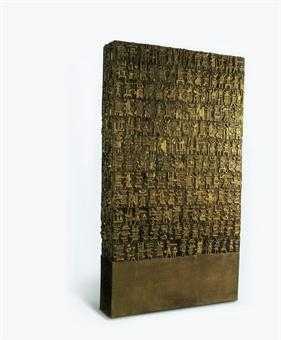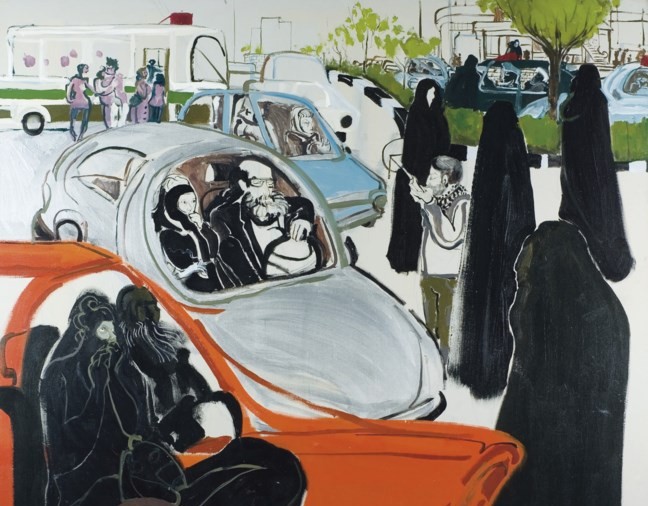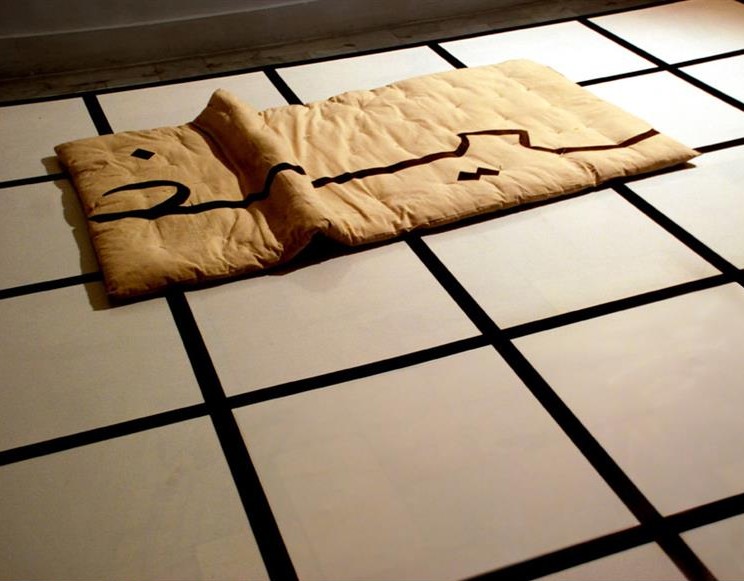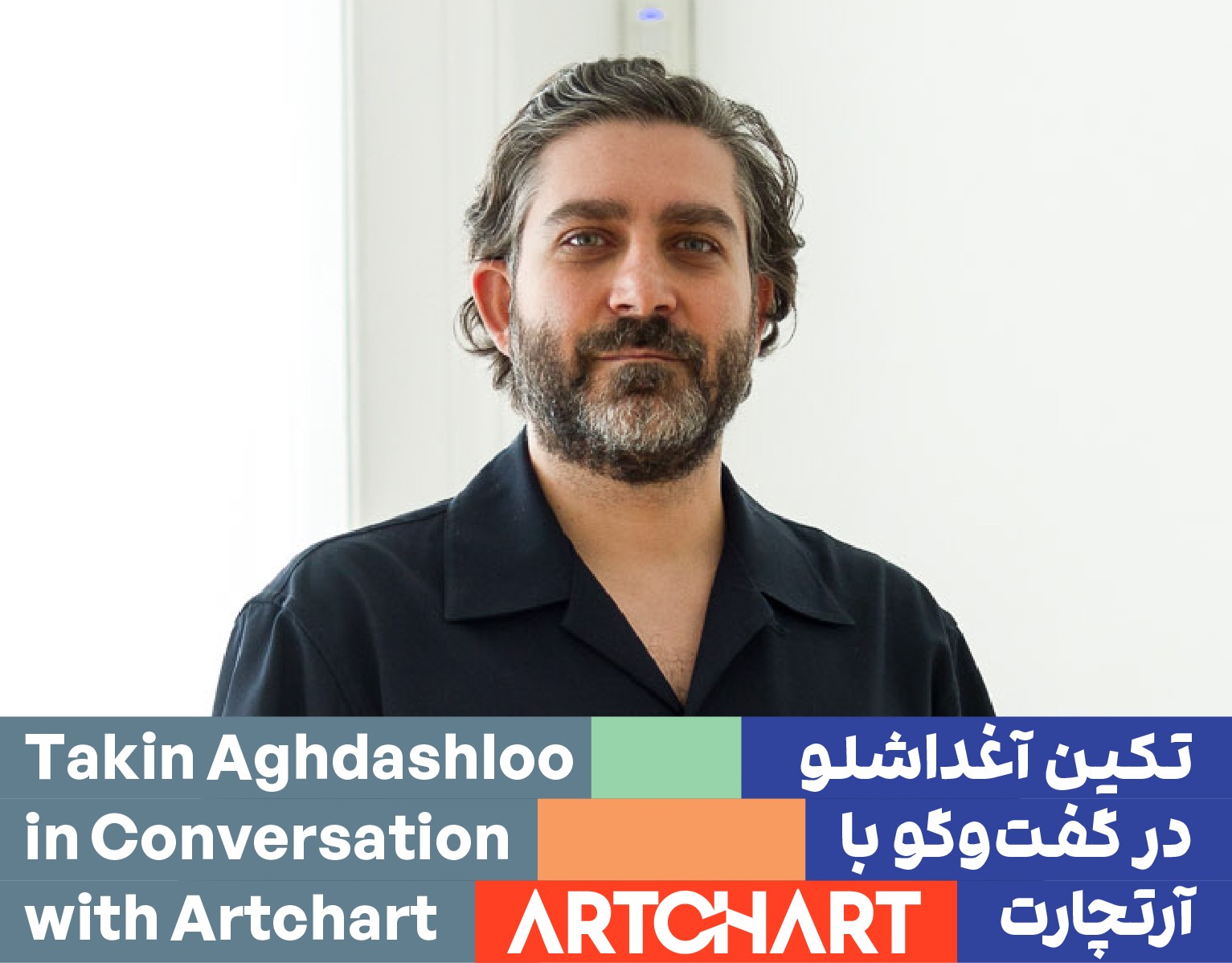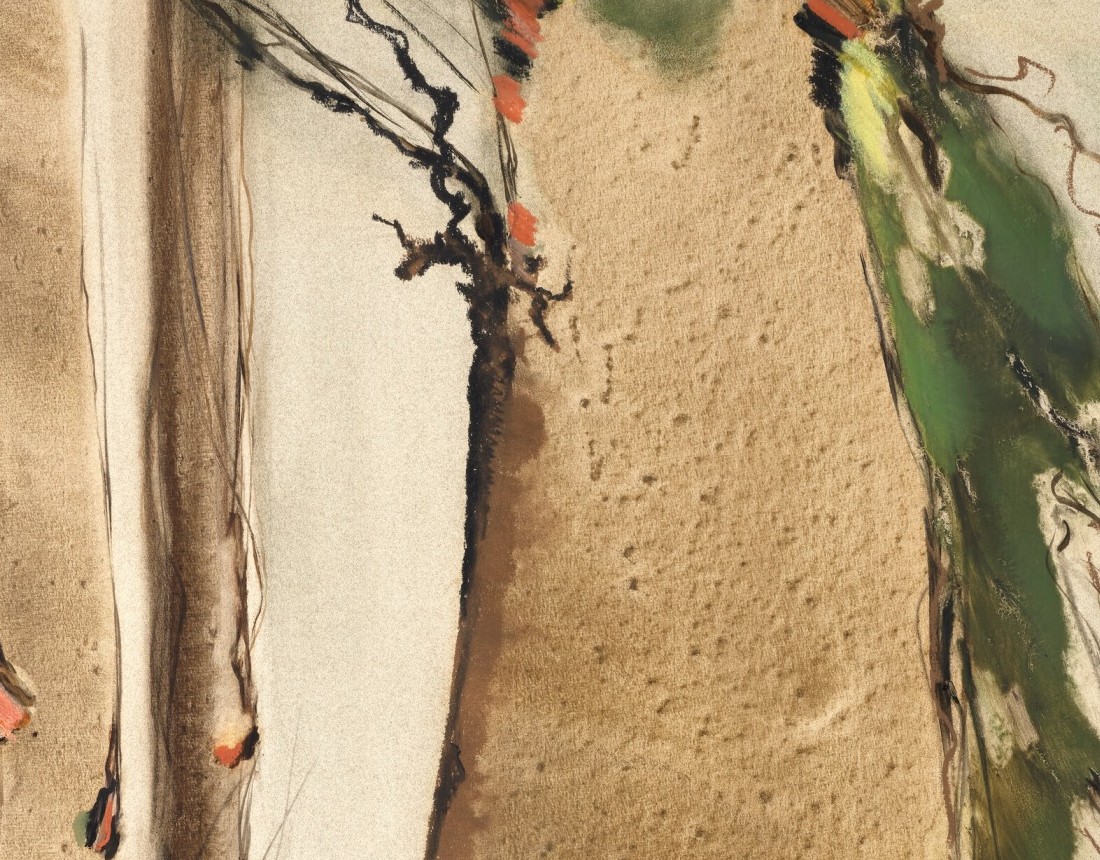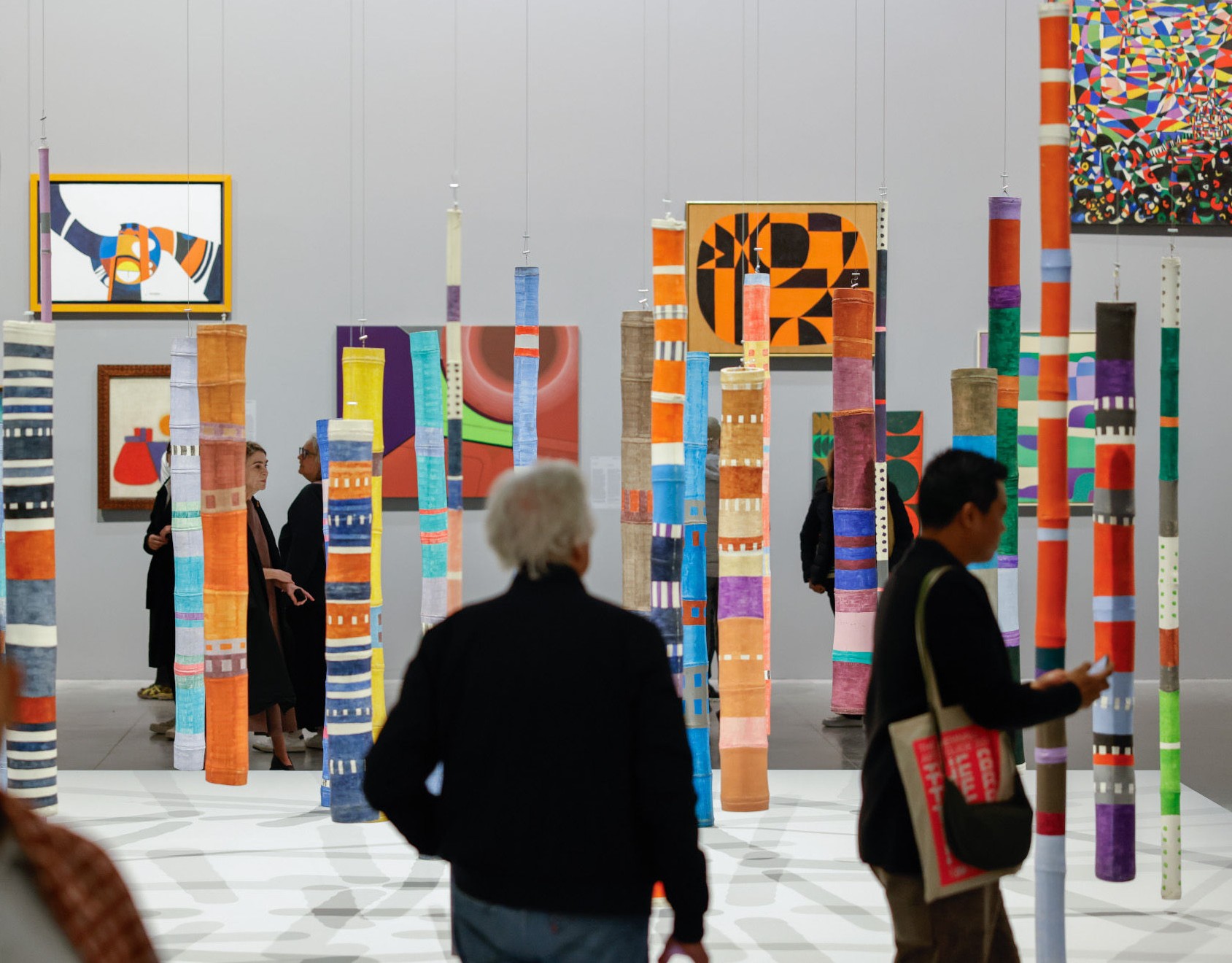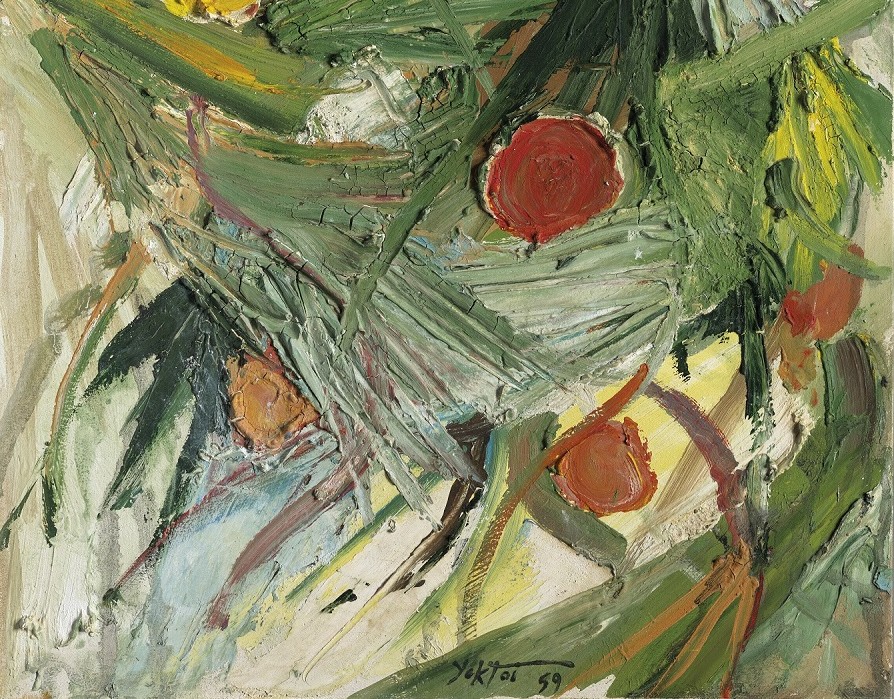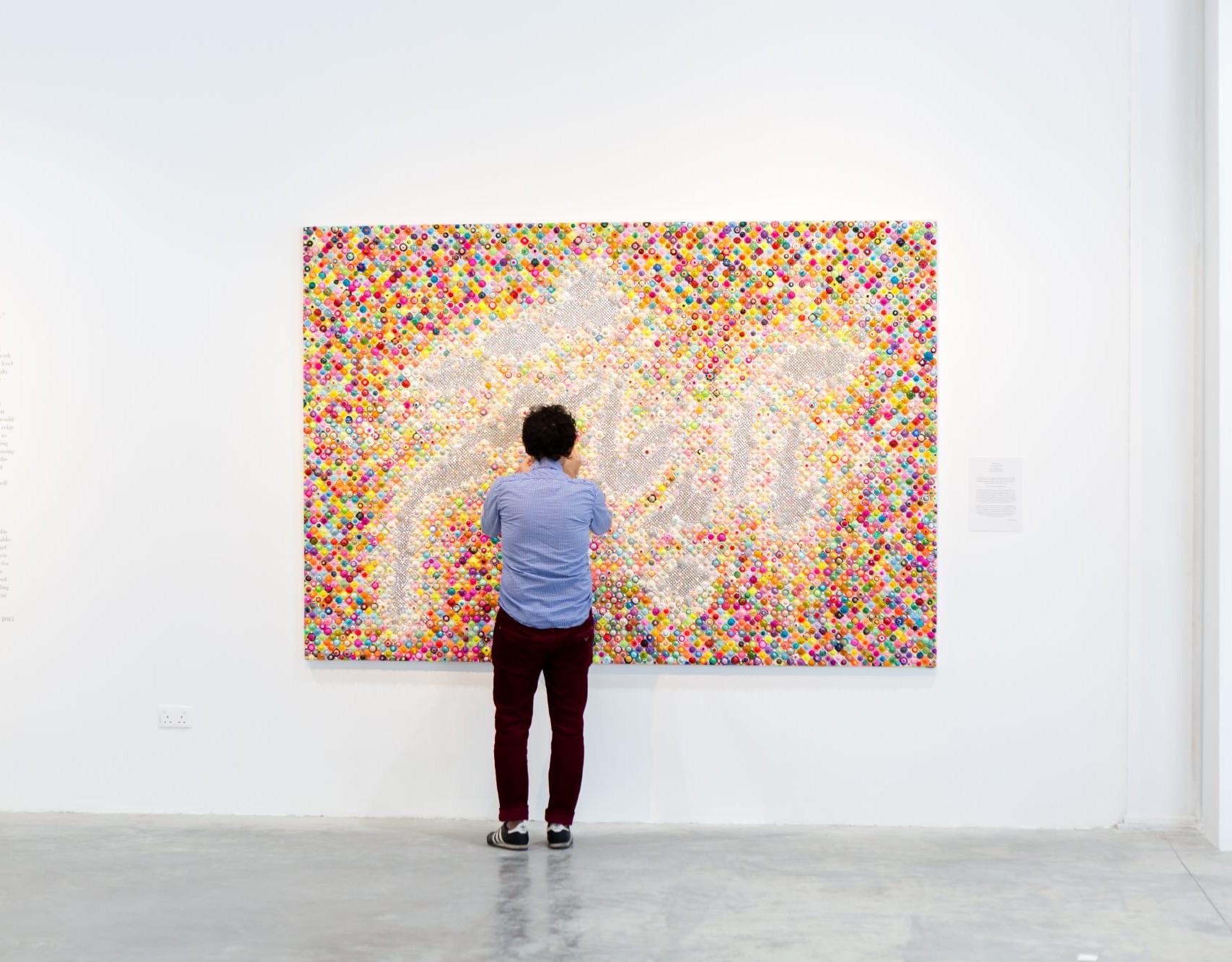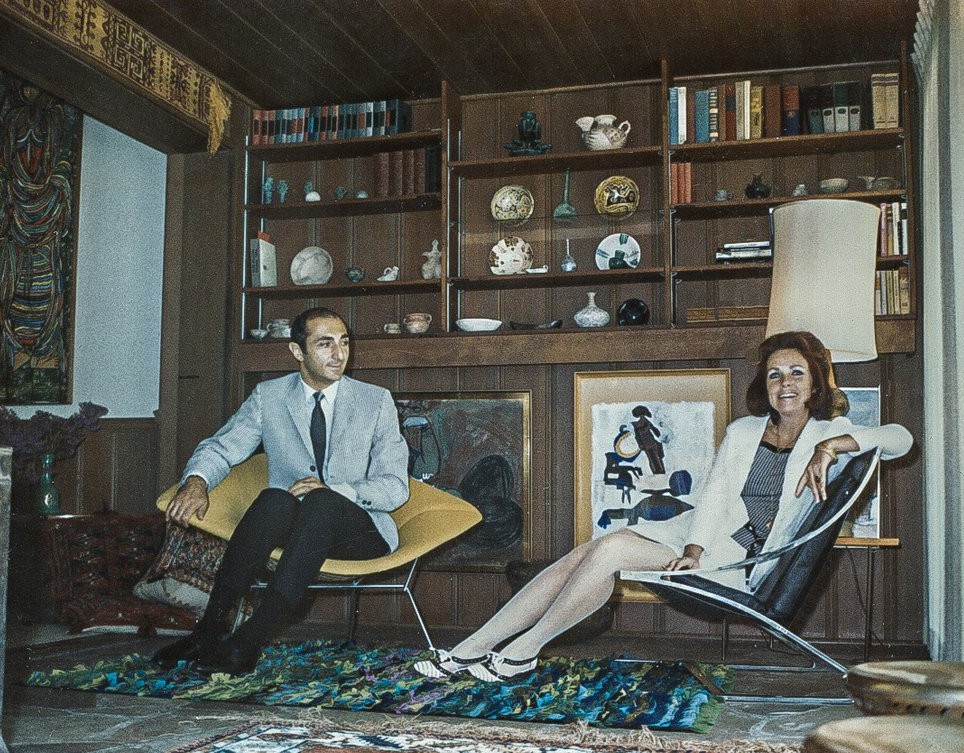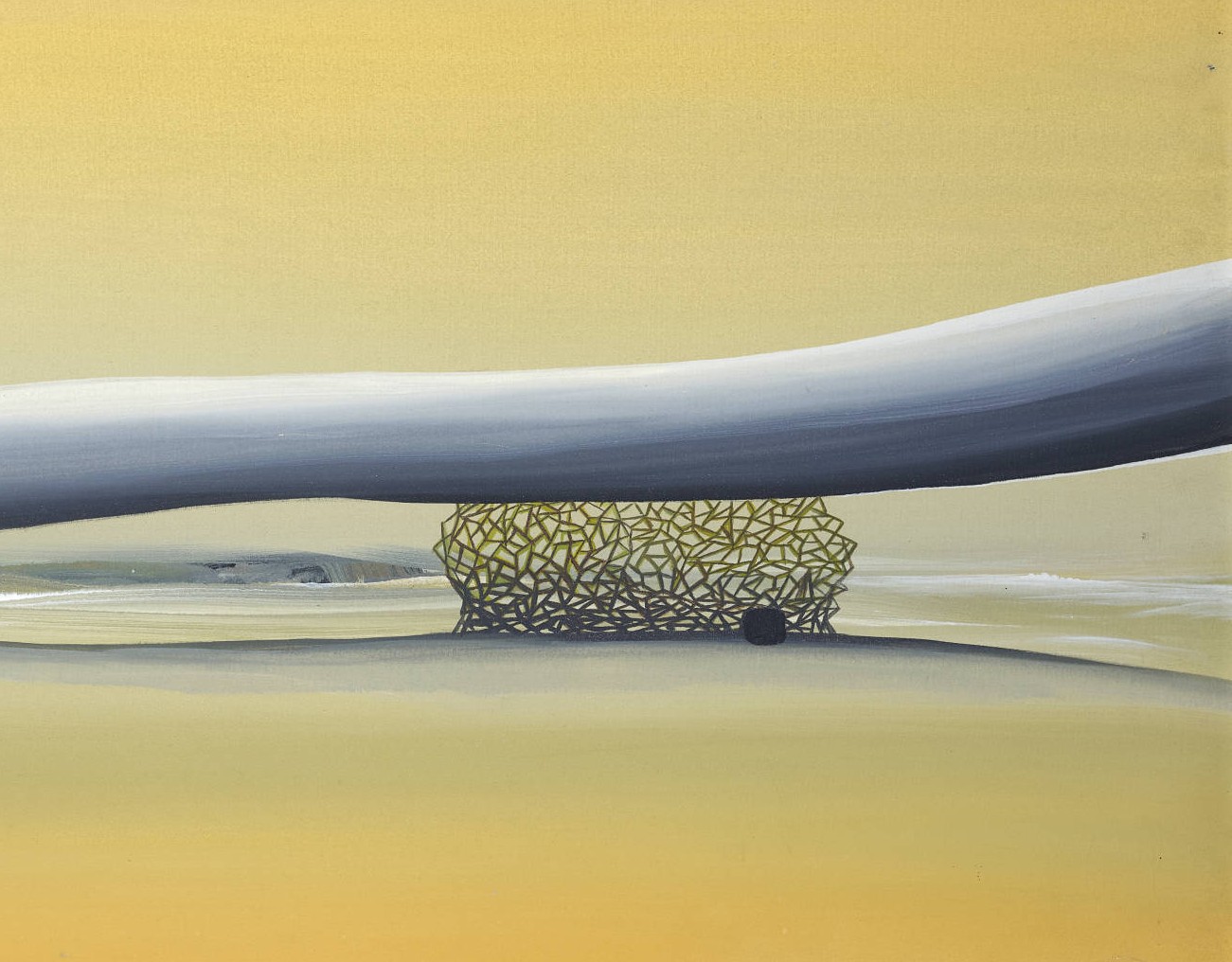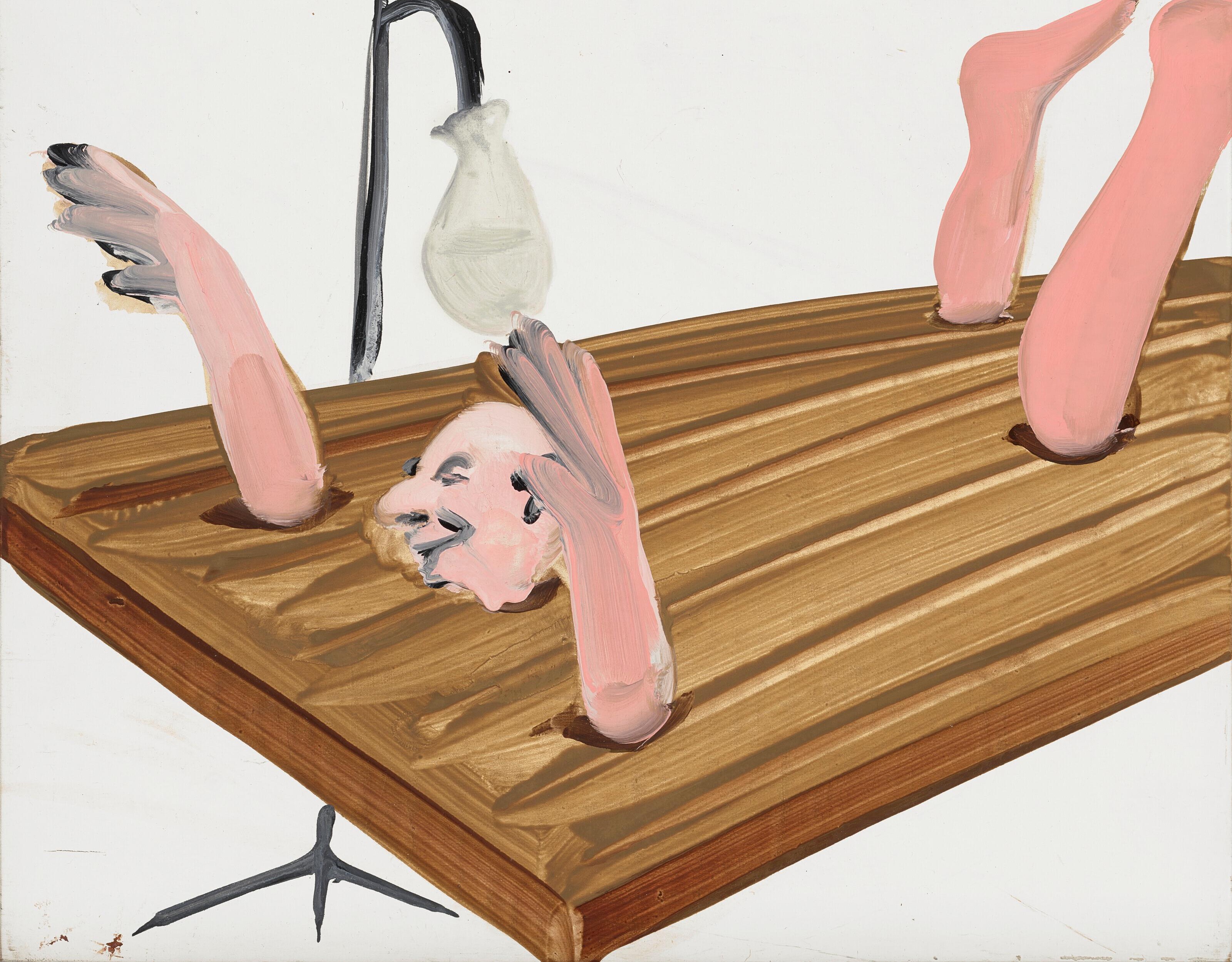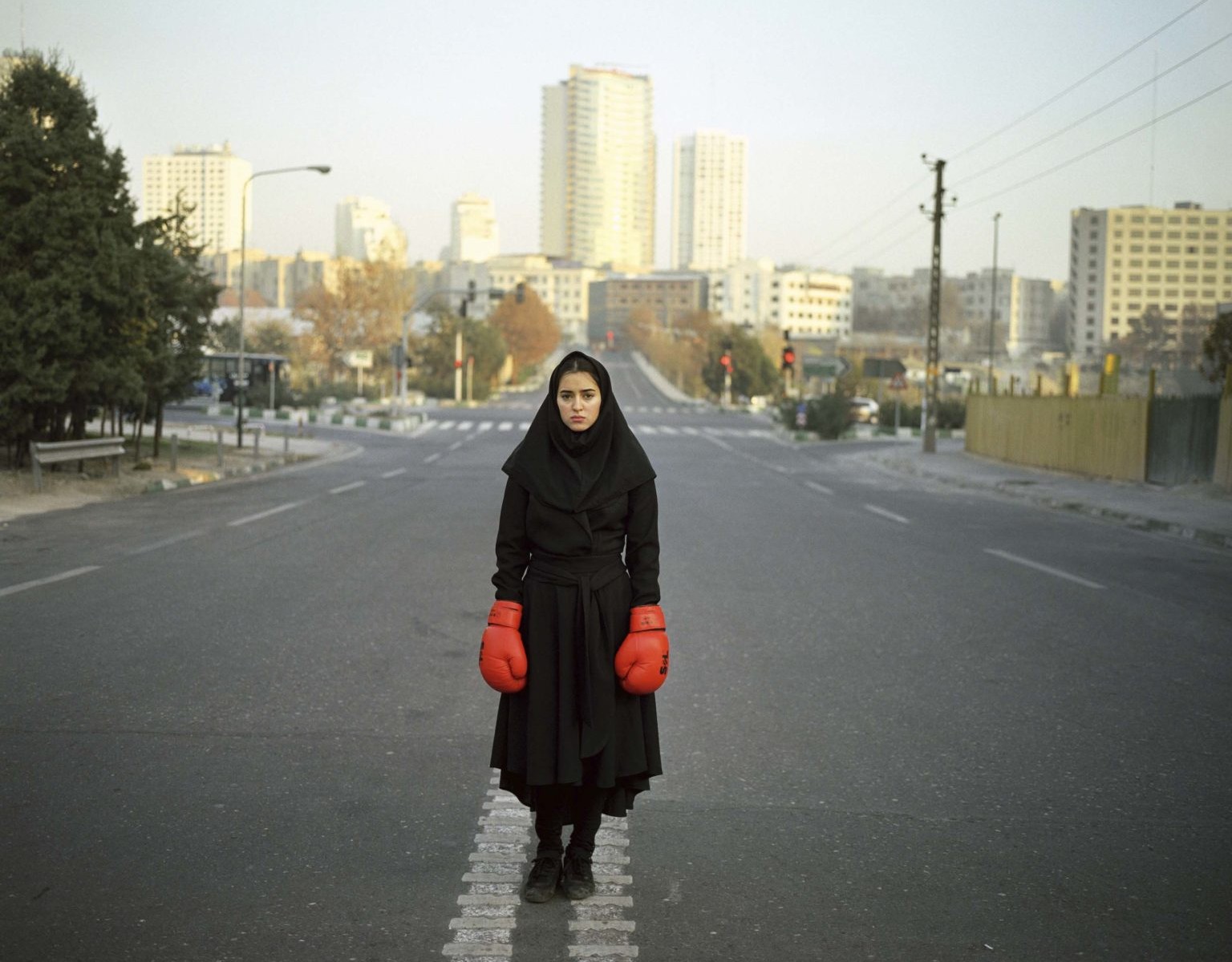About Parviz Tanavoli
Parviz Tanavoliwas born in 1937. He is a sculptor who is one of the founders of the “Sagha Khane” movement in Iran. He invented a new type of sculpture in modern Iranian art. By combining Western modernity with ancient Iranian symbols, he was able to display a symbolic combination of his art.
After spending a three-year sculpture course at the Tehran Academy of Fine Arts, He went to Italy in 1956 to continue his studies and studied at the Academy of Fine Arts in Kara. After returning to Iran, he held two exhibitions of his designs and engravings. Holding these two exhibitions led Tanavoli to receive a scholarship from the Ministry of Culture to continue his studies in Italy and to return to this country.
Tanavoli established his first studio called “Kaboud” in 1961, which at that time had become one of the most important cultural and artistic centers in Tehran. During this period of his career, he was looking for any place that had a tint of ancient Iranian culture and tradition to collect and get ideas to create his works.
Tanavoli's works are generally classified into four main sections: “poet”, “wall”, “nothing” and “lovers”. All four themes have the authenticity of the culture of Iranian objects and Iranian mystical literature. The “nothing” sculptures are among the most famous and, of course, the most numerous of Tanavoli's works. "Nothing" was able to attract the most attention and criticism inside and outside Iran.
Tanavoli's works have been showcased in several exhibitions and some of them in the most important museums in the world, including the New York Museum of Modern Art, the British Museum, the Metropolitan Museum of Art in New York, the Ludwig Aachen Museum, the Vienna Museum of Modern Art and the Tehran Museum of Contemporary Art.
"After all, when an artist creates a work, he builds it based on his mental world," he says of the mood of his work. Let me tell you one thing, you can never understand the secrets of an artist. "Never, because when an artist creates a work, he has a combination of different concepts in mind, based on which he presents a work."
After spending a three-year sculpture course at the Tehran Academy of Fine Arts, He went to Italy in 1956 to continue his studies and studied at the Academy of Fine Arts in Kara. After returning to Iran, he held two exhibitions of his designs and engravings. Holding these two exhibitions led Tanavoli to receive a scholarship from the Ministry of Culture to continue his studies in Italy and to return to this country.
Tanavoli established his first studio called “Kaboud” in 1961, which at that time had become one of the most important cultural and artistic centers in Tehran. During this period of his career, he was looking for any place that had a tint of ancient Iranian culture and tradition to collect and get ideas to create his works.
Tanavoli's works are generally classified into four main sections: “poet”, “wall”, “nothing” and “lovers”. All four themes have the authenticity of the culture of Iranian objects and Iranian mystical literature. The “nothing” sculptures are among the most famous and, of course, the most numerous of Tanavoli's works. "Nothing" was able to attract the most attention and criticism inside and outside Iran.
Tanavoli's works have been showcased in several exhibitions and some of them in the most important museums in the world, including the New York Museum of Modern Art, the British Museum, the Metropolitan Museum of Art in New York, the Ludwig Aachen Museum, the Vienna Museum of Modern Art and the Tehran Museum of Contemporary Art.
"After all, when an artist creates a work, he builds it based on his mental world," he says of the mood of his work. Let me tell you one thing, you can never understand the secrets of an artist. "Never, because when an artist creates a work, he has a combination of different concepts in mind, based on which he presents a work."
The Most Expensive Artwork
At Auctions
First Attendance
1 February 2007
# Attendance
109
# Artworks
187
Average Realized Price
128,001 USD
Average Min Estimate
68,579 USD
Average Max Estimate
96,026 USD
Sell-through Rate
81.818%
Average Growth of Artwork Worth
74.318%
Timeline
Modern & Contemporary Middle Eastern Art auction
25 November
Modern & Contemporary Middle East auction
28 October
The 24th Tehran - Contemporary Iranian Art auction
3 October
LAMA: Prints & Multiples auction
3 September
The 23rd Tehran - Modern and Contemporary Iranian Art auction
22 May
Shifting Gazes: Women Through Middle Eastern Eyes exhibition
15 April
For Nowruz exhibition
14 March
Treasure 6 exhibition
10 January
Dreaming With Eyes Wide Open exhibition
6 December
Post-war & Contemporary Art auction
6 December
Modern and Contemporary Middle Eastern Art auction
13 November
Narrative and Material exhibition
8 November
Timeless Creation exhibition
25 October
All Raised from Soil exhibition
11 October
The 21st Tehran - Contemporary Iranian Art auction
11 October
Saqqakhaneh, the Birth of a Dream exhibition
13 September
Artibition auction
2 August
Contemporary Art Collector exhibition
28 June
Artibition auction
7 June
Modern and Contemporary Art Dubai auction
31 May
Nine Works of Iranian Modern Art exhibition
29 May
Treasure 4 exhibition
24 May
A Collection exhibition
10 May
Premier Art auction
15 April
The Range of Meaning exhibition
1 March
New Year/ New Vision exhibition
23 February
Middle Eastern Art auction
13 February
Display of Sculptures exhibition
2 February
The 19th Tehran -Classic and Modern Iranian Art auction
24 January
The 18th Tehran Contemporary Art auction
12 December
Modern and Contemporary Middle Eastern Art auction
9 November
Collector - Modern exhibition
29 September
A Selection of 70 Years of Iranian Sculpture exhibition
4 August
The 17th Tehran Modern and Contemporary Iranian Art auction
18 July
From the Ghahve-khaneh to Sagha-khane and Selected Modern Artists of Iran exhibition
14 July
Poets, Locks, Cages exhibition
1 July
Contemporary Art auction
7 June
Modern and Contemporary Middle Eastern Art auction
24 May
Intersect 01 exhibition
19 May
Modern and Contemporary Middle Eastern Art auction
16 May
Collector exhibition
15 February
MIDDLE EAST MODERN & CONTEMPORARY auction
5 July
the PREMIER ART Auction! RARE ORIGINAL FINE & MODERN ART, SCULPTURES, BRONZES, ART GLASS, POTTERY, RARE MULTIPLES! auction
26 June
Modern Collector exhibition
24 June
Silver and Fine Art auction
23 June
Contemporary Art, Editions and Modern British Pictures auction
28 April
20th Century Art / Middle East auction
23 March
Soft Edge of the Blade exhibition
10 February
Winter selection 2022 exhibition
14 January
The 15th Tehran- Modern Iranian Art auction
14 January
Exhibition of 30 Sculptures by 30 Artists exhibition
24 December
Sober Weekend exhibition
11 December
The Mana Jalalian Collection: A Rare Collection of Iranian Modern Art exhibition
15 November
Middle Eastern 20th and 21st Century Art auction
20 October
20th Century Art / Middle East auction
20 October
Rebel, Jester, Mystic, Poet Contemporary Persians—The Mohammed Afkhami Collection exhibition
10 September
No.9 auction
3 September
Small Artworks collection exhibition
11 June
Heech mon amour exhibition
1 June
1970s Prints Parviz Tanavoli exhibition
26 April
The last meeting exhibition
12 March
The 13th Tehran- Modern and Contemporary Iranian Art auction
15 January
Full Length... exhibition
4 September
Virus of collecting exhibition
4 September
20th Century Art / Middle East auction
24 March
No.2 auction
6 March
دوازدهمین دوره حراج تهران auction
17 January
Art Throught the ages exhibition
10 January
Oh Nightingale exhibition
24 July
یازدهمین دوره حراج تهران auction
5 July
Modern and Contemporary Middle Eastern Art auction
1 May
Middle Eastern Modern & Contemporary Art auction
23 March
2018 Collection Selling exhibition
17 January
Middle Eastern, Modern and Contemporary Art auction
24 October
Modern and Contemporary Middle Eastern Art auction
24 October
Nothing and Everything exhibition
6 July
The 9th Tehran- Classic and Modern Iranian Art auction
29 June
Egypt's Awakening and Modern and Contemporary Middle Eastern Art auction
18 April
Dubai: Post War and Contemporary Art auction
22 March
Hôtel Drouot, Salles 5 et 6, Art Moderne et Contemporain du Moyen-Orient* auction
6 December
Parviz Tanavoli and Niavaran Atelier exhibition
6 November
Sculpture Exhibition Parviz Tanavoli exhibition
6 November
Middle Eastern, Modern and Contemporary Art auction
25 October
هفتمین دوره حراج تهران auction
7 July
Parviz Tanavoli and Iran's Lions exhibition
3 July
Modern and Contemporary Middle Eastern Art auction
26 April
Modern & Contemporary Art auction
18 March
Sculpture Exhibition exhibition
11 March
Drouot Richelieu, Salle 5 & 6, Art Abstrait & Contemporain* auction
9 December
Zeitgenössische Kunst I auction
3 December
Things and Nothings exhibition
4 November
Modern & Contemporary Art auction
18 October
Zeitgenössische Kunst I auction
4 June
پنجمین دوره حراج تهران auction
27 May
Parviz Tanavoli and Fifty Years of Pop Art exhibition
20 May
Alchemy: Objects of Desire auction
21 April
Dubai: Modern and Contemporary Art Now and Then auction
16 March
Modern & Contemporary Art auction
16 March
100 Masterworks auction
7 December
Iran Heartbeat exhibition
26 November
Exhibition of works by Parviz Tanavoli exhibition
20 November
Display of a single work by Parviz Tanavoli exhibition
30 October
Drouot Richelieu, Salle 1, Tableaux Abstraits & Contemporains auction
12 June
چهارمین دوره حراج تهران auction
29 May
The Young Collectors auction
12 May
Modern & Contemporary Arab, Iranian and Turkish Art auction
18 March
Looking Back exhibition
10 February
poet exhibition
14 November
Modern and Contemporary Arab, Iranian and Turkish Art auction
21 October
Islamic and Indian Art auction
7 October
سومین دوره حراج تهران auction
30 May
Modern and Contemporary Art auction
15 May
The Greater Middle East Unveiled exhibition
22 April
Islamic and Indian Art auction
8 April
Modern & Contemporary Arab, Iranian & Turkish Art auction
19 March
Modern and Contemporary Arab,Iranian and Turkish Art Part II auction
30 October
Modern and Contemporary Arab,Iranian and Turkish Art Part I auction
29 October
Modern and Contemporary Art auction
25 September
دومین دوره حراج تهران auction
28 May
Contemporary Art/Doha auction
22 April
Modern and Contemporary Arab,Iranian and Turkish Art Part II auction
17 April
Modern and Contemporary Arab,Iranian and Turkish Art Part I auction
16 April
Rugs by Parviz Tanavoli exhibition
15 January
Drouot Richelieu, Salles 1 & 7, Art Contemporain auction
14 November
Modern & Contemporary Arab, Iranian and Turkish Art Part II auction
24 October
1Ere Vente a Dubai International Modern And Contemporary Art auction
22 October
اولین دوره حراج تهران auction
22 May
Modern and Contemporary Arab, Iranian and Turkish Art Part I auction
17 April
Modern and Contemporary Arab, Iranian and Turkish Art Part II auction
26 October
Modern and Contemporary Arab, Iranian and Turkish Art Part I auction
25 October
Contemporary Art / Arab & Iranian auction
4 October
Heech (Nothing) Series exhibition
10 June
Modern & Contemporary Middle Eastern Art & South Asian Art auction
1 June
Modern and Contemporary Arab, Iranian and Turkish Art auction
19 April
Hurouf: The Art of the Word auction
16 December
Vente Art Contemporain auction
7 December
Design, Art Contemporain, Photographie Contemporaine, Art Iranien auction
25 November
International Modern and Contemporary Art auction
26 October
Contemporary Art / Arab & Iranian auction
20 October
Modern & Contemporary Middle Eastern & South Asian Art auction
11 October
Post War & Contemporary Art auction
16 September
Modern and Contemporary and Latin American Art auction
11 May
PARVIZ TANAVOLI & ABBAS KIAROSTAMI exhibition
9 November
International Modern & Contemporary Art auction
27 October
Art Moderne et Contemporain Iranien et Arabe auction
24 October
Modern & Contemporary Middle Eastern & South Asian Art auction
12 October
Tableaux Orientalistes et Art Moderne Arabe et Iranien auction
16 June
Modern & Contemporary Middle Eastern & South Asian Art auction
3 June
Parviz Tanavoli: Bodywear exhibition
15 May
International Modern & Contemporary Art auction
29 April
- - April 2009 auction
26 April
Tableaux Orientalistes et Art Moderne Arabe et Iranien auction
17 December
Modern & Contemporary Arab, Iranian, Indian & Pakistani Art auction
24 November
International Modern and Contemporary Art auction
30 October
Modern and Contemporary Arab and Iranian Art auction
23 October
International Modern and Contemporary Art auction
30 April
Modern & Contemporary Arab, Iranian, Indian & Pakistani Art auction
3 March
International Modern & Contemporary Art auction
31 October
Modern & Contemporary Arab & Iranian Art auction
24 October
MODERN AND CONTEMPORARY ART auction
1 February
Parviz Tanavoli Retrospective exhibition
26 January
Articles
The Islamic and Neo-Traditional Art Market from Its Origins to the Present: A Look at the Statistics and Figures 3 February 2025
The Islamic art market emerged in the early 20th century and expanded through independent dealers in Paris, London, and New York. Many of these dealers, who were also collectors, imported valuable artworks directly from Iran, Egypt, and other regions. The secondary market for Islamic art matured by the 1920s, coinciding with the enforcement of restrictions on the export of historica...
Report on the Twenty-First Tehran Auction: The Second Online Auction of Contemporary Iranian Art 15 October 2024
Artchart, a data analytics and mining platform for the Iranian art market, has been dedicated to recording and analyzing economic data related to Iranian art since its establishment in 2019. To date, this platform has closely examined twenty editions of Tehran Auction, and the following report will delve into the twenty-first edition of the auction. This edition, focused on contempo...
Iranian Art of the 1990s and 2000s: Trends, Movements, and Market (Part Two) 24 July 2024
The 2000s and 2010s are considered pivotal decades in the landscape of Iranian art. During this period, new artistic approaches were introduced into the Iranian visual arts scene by both the public and private sectors. The art market also began to take an interest in Middle Eastern art, organizing the first auctions dedicated to these works. In the early auctions specifically focuse...
Iranian Art of the 1990s and 2000s: Trends, Movements, and Market (Part One) 17 July 2024
The 2000s and 2010s are considered pivotal decades in the landscape of Iranian art. During this period, new artistic approaches were introduced into the Iranian visual arts scene by both the public and private sectors. The art market also began to take an interest in Middle Eastern art, organizing the first auctions dedicated to these works. In the early auctions specifically focuse...
Takin Aghdashloo Discusses Why Galleries Prefer London in Exclusive Artchart Interview 18 June 2024
Takin Aghdashloo, the curator of the exhibition "Nine Works from Iranian Modern Art,” elaborated on the details of this exhibition and curatorship matters in a conversation with Artchart. The exhibition took place from the 9th to the 13th of Khordad (May 29th to June 2nd) at the temporary space of Bavan Gallery in Cromwell Place, London. Featuring works by nine artists including Ayd...
A Review of Christie's Modern and Contemporary Dubai Online Auction, Spring 2024 2 June 2024
The Modern and Contemporary Dubai online auction was held on Christie's website from May 9 to May 31, 2024. In this auction, works by 70 artists were featured, totaling 90 artworks. Out of these, 75 pieces were sold, resulting in a total sale of $2.2 million. Fourteen Iranian artists also had their works presented in this auction, achieving a 100% sales rate. The most expensive piec...
The Venice Biennale: A Creative Economy-Based Art Enterprise 14 May 2024
The Venice Biennale is one of the oldest and most prestigious avant-garde art exhibitions in the world, with a high level of credibility. In addition to presenting artists' works and introducing them, this biennial is important for predicting and creating new artistic trends. It manages its events with a multidisciplinary model of organization and management, which has made its natu...
Iranian Art Market Report for 1402 SH (2023-2024) 20 April 2024
Artchart, which had previously examined the Iranian Art Market in 1401 SH (2022-2023), has once again provided an in-depth report for 1402 SH (2023-2024). The forthcoming report will analyze the data collected in 1402 SH and compare it to previous years to illustrate the current state and trends within the Iranian art market. The initial section provides an overview of the mos...
18th Tehran Auction Report 2 January 2024
Artchart, as a data search and data mining platform for the art market, has examined 8 periods of Tehran Auction so far. In this issue, Artchart analyzes the 18th Auction of Tehran or The First Online Auction of Tehran. In this report, you will read: Sales Statistics, The Most Expensive Works, Key Findings, Market Performance, Record Holders & Background Comparison.
A Review on Christie's and Milon's Middle Eastern Modern and Contemporary Art Auctions, Fall of 2023 3 December 2023
The Middle Eastern art auctions of Christie's and Milon were held on November 9 and November 30, 2023, respectively, which also included several Iranian artists. There were 9 Iranian artists with 11 works in the Christie's and 10 Iranian artists with 13 works in the Milon, which in the following, you will read a report of their performance in these two auction houses.
Market of Iranian Neo-calligraphers 15 August 2023
Neo-calligraphic style entered the modern Iranian art movement in 1964 with the efforts of the pioneers of the Saqakhaneh movement, namely Hossein Zenderoodi, Parviz Tanavoli and Faramarz Pilaram. From this movement, later, a trend called Calligraphy-Painting branched out, which, to some extent, adhered to the rules and style of traditional calligraphy. Since the the 2000s, with the...
Collecting Art in Contemporary Iran; From Artists to Archivists 29 July 2023
Art collecting in contemporary Iran is more of a patronage that even leads to archival activities. But is it possible to classify Iranian art collectors and talk about their motivations? In this short essay, Savana Boghossian has tried to propose a framework for art collecting in Iran, considering the limited information at hand.
۱7th Tehran Auction Sales Report 26 July 2023
The 17th Tehran auction: modern and contemporary, was held on Friday July 21st, 2023 at Parsian Azadi Hotel. This auction achieved a total sale of 214 billion tomans equivalent to 4.3 million dollars, which was a growth of 77.8% compared to the previous period. Artchart has observed the 17th Tehran auction in the upcoming report.
From the Sepehri's trees to the painting's of Pooya Aryanpour; An overview of the Modern and Contemporary Middle Eastern auctions at Bonhames and Millon 29 May 2023
The modern and contemporary art auction was held on May 24, 2023 in Bonames and Millon & Associes auction houses. Iranian artists such as Sohrab Sepehri, Manouchehr Yektaei, Parviz Tanavoli and Marco Grigorian to younger ones such as Pooya Aryanpour were participated in these auctions and some of them were among the most expensive one's that were sold. This report is an overview...
MODERN & CONTEMPORARY MIDDLE EASTERN ART: A REPORT 23 May 2023
In this report, the works of Iranian artists in the online auction of Christie's Dubai in the contemporary and modern art of the Middle East are discussed. In this auction, 15 works by Iranian artists were present, from veterans such as Manouchehr Yektai to young contemporary artists such as Rokni Haerizadeh. Information such as total sales, growth rate and the most expensive works...
Art as a way of fighting 10 December 2022
The contemporary artist is no longer an artist who expresses the standard narrative or previous narrative and is always ahead of the society. In this essay, Hossein Ganji explains how the artists, with their protest expressions, drew the screams in the throat and the unfulfilled demands of not mentioned, and in the meantime, they also gave many damages and compensations. Either when...
